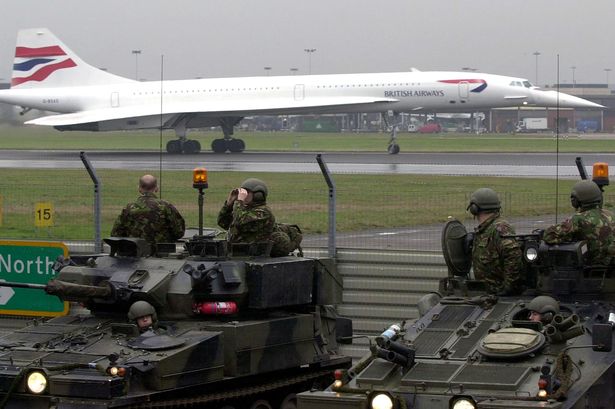The heightened security presence at Heathrow Airport in February 2003 was a dramatic illustration of the pervasive anxiety gripping the world in the aftermath of the 9/11 attacks and in the lead-up to the invasion of Iraq. The deployment of 450 heavily-armed soldiers, backed by armored vehicles, alongside over 1,000 additional troops and armed police officers, transformed the typically bustling civilian airport into a scene reminiscent of a military installation. This unprecedented show of force was a direct response to specific intelligence suggesting an imminent terrorist threat against the airport, a critical piece of national infrastructure and a symbolic target. The scale and nature of the deployment underscored the gravity of the perceived threat and the government’s commitment to preventing another devastating attack on British soil.
The intelligence that prompted this massive security operation reportedly pointed to a potential surface-to-air missile attack originating from the Hounslow area, adjacent to Heathrow. This particular threat mirrored a foiled al-Qaeda plot in Kenya just a few months earlier, further intensifying concerns. The potential for a similar attack at Heathrow, one of the world’s busiest international airports, presented a nightmarish scenario. The devastating consequences of a successful missile strike on a passenger aircraft were almost unimaginable, both in terms of human life and the potential for widespread panic and economic disruption. The government’s decision to deploy such a substantial force was driven by the imperative to mitigate this risk, even at the cost of disrupting normal airport operations and creating a highly visible security presence.
The visible deployment of troops and armored vehicles was a deliberate tactic intended to act as a deterrent. The sheer scale of the operation, widely publicized in the media, aimed to send a clear message to potential attackers that Heathrow was a hardened target, heavily defended and under constant surveillance. The presence of armed soldiers patrolling the perimeter and surrounding areas, along with the deployment of surface-to-air missile defense systems, was designed to create an environment so hostile to any planned attack that it would be deemed too risky to execute. This strategy aimed to preempt any attack by showcasing the preparedness and resolve of the security forces.
Beyond the immediate objective of thwarting a specific threat, the high-profile security operation at Heathrow also served a broader strategic purpose. In the context of the impending war in Iraq, the government was keen to demonstrate its commitment to national security and its ability to protect critical infrastructure. With public opinion divided on the war, the display of military strength at Heathrow could be interpreted as a reassurance to the public that the government was taking all necessary precautions to safeguard the country against any potential retaliatory attacks. This projection of strength and preparedness was aimed at bolstering public confidence in the government’s security policies at a time of heightened international tension.
However, the massive security operation also generated controversy. Critics questioned the proportionality of the response, arguing that the highly visible military presence created an atmosphere of fear and unnecessarily disrupted the lives of travelers. Some argued that the government was overreacting to intelligence reports and using the heightened security measures as a political tool to bolster support for the war in Iraq. Concerns were also raised about the potential for such a large-scale military deployment to become normalized, potentially eroding civil liberties and creating a more militarized society. The debate over the appropriate balance between security and freedom, already intensifying in the post-9/11 world, was further fueled by the events at Heathrow.
Ultimately, the heightened security operation at Heathrow in February 2003 represents a complex and multifaceted event reflecting the anxieties and uncertainties of a world grappling with the threat of terrorism. While the immediate threat was averted and no attack materialized, the operation sparked a broader discussion about the appropriate response to terrorism, the balance between security and freedom, and the long-term implications of militarizing civilian spaces. The images of armed soldiers patrolling Heathrow, though intended to reassure, also served as a stark reminder of the vulnerability of modern society and the ever-present threat of terrorism in the early 21st century. The event remains a significant episode in the history of post-9/11 security measures and continues to inform discussions about the evolving relationship between security, freedom, and the role of the military in civilian life.














